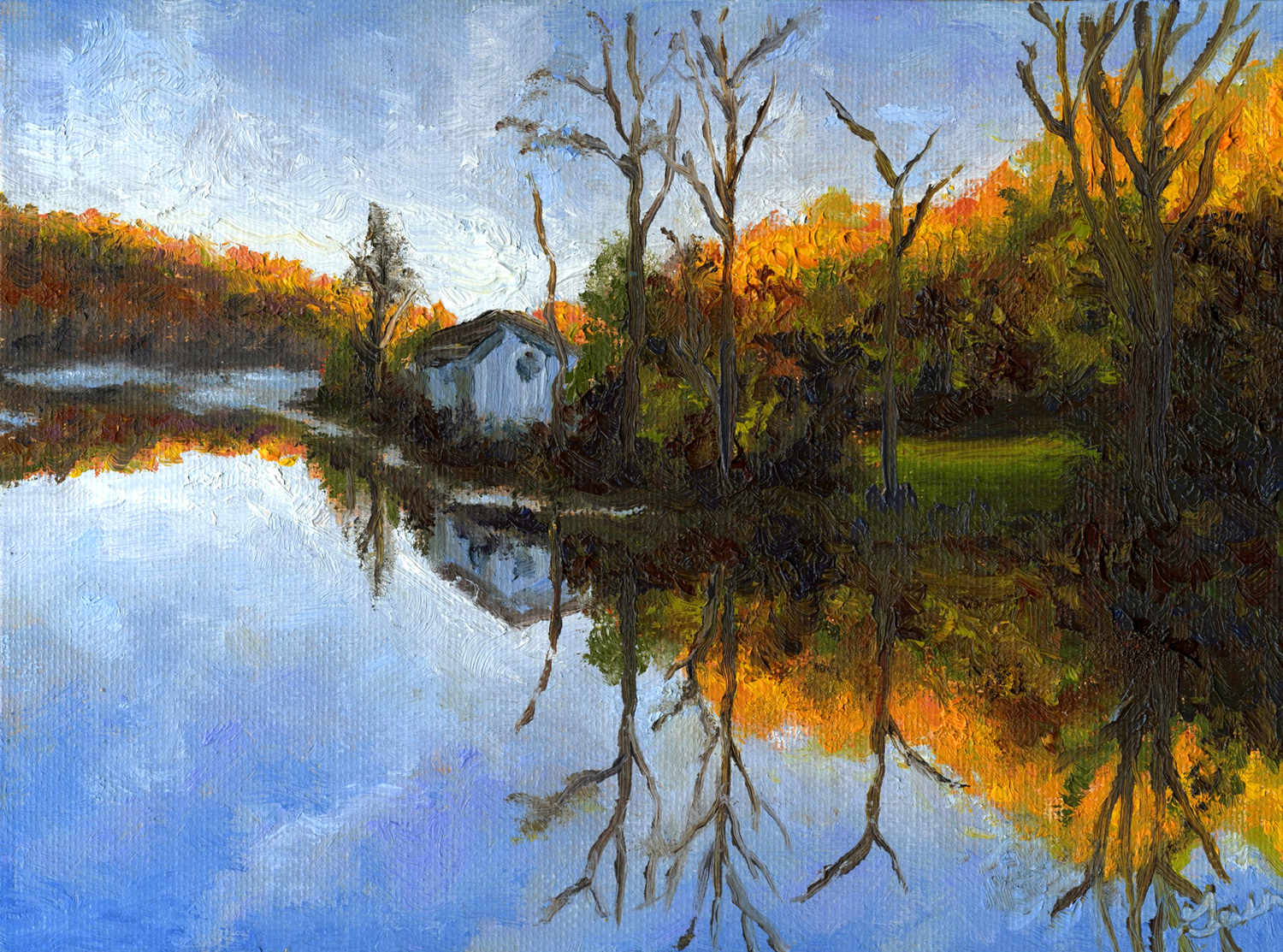Discover Timeless Artwork Oil Paintings for Sale Today
Discover Timeless Artwork Oil Paintings for Sale Today
Blog Article
Discovering Everything About Oil Paints: A Guide to Recognizing Their Charm and Worth
Oil paints have mesmerized audiences for centuries, using a peek into the artistic mastery of numerous ages. Their abundant history is linked with ingenious techniques and profound emotional expression. Understanding the products and methods behind these artworks can boost admiration. In addition, the market for oil paints provides opportunities for enthusiasts and financiers alike. As one discovers this interesting world, the concern arises: what makes an oil paint truly beneficial?
The History of Oil Paint: A Trip Via Time
Oil paint has roots that date back to old times, it genuinely flourished during the Renaissance, when musicians uncovered its convenience and rich shade possibility. Early examples can be mapped to the 7th century, with techniques developing significantly throughout cultures. The medium became famous in Northern Europe in the 15th century, specifically with the jobs of artists like Jan van Eyck, that spearheaded its use for in-depth realism and vibrant tones. This period noted a departure from tempera paints, permitting better depth and appearance. As oil painting spread, it affected many artists, leading to masterpieces by prominent numbers such as Leonardo da Vinci and Rembrandt. The medium's tradition continues, forming the art world well into contemporary times.
Comprehending Oil Repaints: Materials and Techniques
As artists check out the globe of oil paints, they come across a varied selection of products and techniques that specify this tool. The main elements of oil paint consist of pigments, which supply color, and drying out oils, such as linseed, that bind the pigments and help with application. Various additives can modify the paint's structure and drying time, enhancing convenience. Methods like glazing, where clear layers are developed, and impasto, which entails applying thick paint, enable different aesthetic results. Additionally, the use of brushes, palette knives, and even fingers can produce special appearances and surfaces. Comprehending these products and strategies enables musicians to completely share their creativity and achieve the preferred influence in their artwork.
The Duty of Color in Oil Paints
Color plays a critical function in oil paints, influencing both visual allure and psychological resonance. Recognizing shade concept fundamentals, consisting of the relationships in between shades, can boost a musician's capacity to communicate mood and ambience. Furthermore, understanding shade blending methods enables greater depth and splendor in a paint's combination.

Shade Theory Basics
Recognizing color concept is necessary for artists functioning with oil paints, as it forms the foundation for developing aesthetically appealing and unified compositions. Shade theory encompasses the study of just how colors connect, the shade wheel, and the partnerships in between key, second, and tertiary colors. Musicians make use of corresponding shades to boost contrasts and develop prime focus, while comparable colors promote unity and cohesiveness within an item. In addition, the concepts of cool and warm colors affect the perception of depth and area in a painting. Realizing these principles allows musicians to adjust color successfully, leading the audience's eye and communicating their designated message. Mastery of shade theory inevitably enriches a musician's capability to communicate feelings and ideas through their work.
Psychological Impact of Shade
The emotional influence of color in oil paintings plays an important function in exactly how audiences regard and connect with art work. Colors evoke particular feelings and state of minds, influencing the audience's emotional state. For example, warm tones like oranges and reds can develop a sense of warmth and power, while trendy tones such as blues and greens usually evoke calmness or self-contemplation. Artists tactically pick shade combinations to enhance narrative aspects, assisting the target market's emotional journey. The saturation and contrast of shades further amplify these results, drawing interest and developing emphasis. Inevitably, the interaction of shades in oil paints not just boosts their visual appeal yet likewise functions as an effective medium for psychological expression, enhancing the visitor's experience and analysis.
Color Mixing Techniques
While several aspects of oil painting add to the overall structure, grasping shade blending methods is important for achieving desired impacts and depth. Shade mixing can be approached with numerous approaches, including the additive and subtractive procedures. Additive blending involves incorporating shades of light, while subtractive blending depends on pigments, where colors mix to produce brand-new shades. Musicians commonly use a restricted palette to develop harmonious works, understanding the partnerships between main, second, and tertiary shades. Techniques such as glazing and scumbling additionally boost depth and luminance. By skillfully mixing shades, a musician can stimulate feelings, develop prime focus, and attain a sense of realism, eventually raising the painting's visual and emotional effect.
Famous Oil Painters and Their Iconic Functions

Famed for their proficiency of shade and method, oil painters have actually developed some of the most celebrated artworks in history. Prominent artists like Vincent van Gogh mesmerized audiences with his emotive brushwork in "Starry Evening," while Claude Monet's "Perception, Dawn" laid the foundation for Impressionism. Leonardo da Vinci's "Mona Lisa" remains a long-lasting sign of creative wizard, showcasing his skill in catching human expression. Meanwhile, Rembrandt's "The Night Watch" illustrates his cutting-edge use of light and darkness. Other noteworthy figures consist of Pablo Picasso, who revolutionized modern-day art with his bold testing in works like "Les Demoiselles d'Avignon," get more and Georgia O'Keeffe, whose lively depictions of flowers and landscapes assisted define American innovation. Each artist's distinct style added considerably to the oil paint landscape.
Just how to Evaluate the Quality of an Oil Painting
Reviewing the top quality of an oil painting includes a mindful assessment of craftsmanship techniques, as well as an analysis of shade and composition. Observing brushwork, layering, and the application of paint can disclose the musician's skill degree. Furthermore, the interplay of shades and the total plan of elements contribute significantly to the painting's visual worth.
Analyzing Craftsmanship Methods
A precise evaluation of craftsmanship techniques is crucial for identifying the high quality of an oil painting. Evaluators ought to first analyze the application of paint; thick, textured brushstrokes might recommend a knowledgeable hand, while extremely consistent applications might suggest an absence of depth. oil paintings for sale. The layering method is likewise essential; the presence of glazes and varied density can boost luminosity and complexity. Additionally, the top quality click here to read of the products utilized, such as the canvas and pigments, plays a substantial role in durability and overall aesthetic. Focus to information in elements like sides and changes between shades reflects the musician's commitment to their craft. Eventually, these methods add to the paint's emotional effect and market price, acting as indications of the artist's ability and intent
Evaluating Shade and Structure
While examining the top quality of an oil painting, one should concentrate on the interplay of shade and composition, as these components are fundamental to the art work's total effect. Shade choices can stimulate feelings and establish state of mind; for that reason, the musician's palette must be examined for harmony and comparison. A well-balanced make-up directs the audience's eye and develops a feeling of unity. Artists commonly use techniques like the guideline of thirds or leading lines to enhance aesthetic passion. Additionally, using light and darkness can include deepness, enhancing the three-dimensionality of the painting. Eventually, a successful oil paint marries shade and composition, engaging the viewer and inviting a deeper gratitude of the musician's vision and method.
Taking care of and Preserving Oil Paintings
Correct treatment and conservation of oil paintings is essential for maintaining their honesty and long life. To safeguard these art work, it is vital to present them away from straight sunshine, which can trigger fading and staining. Keeping a steady environment with controlled temperature level and moisture additional aids in protecting against damages. Cleansing must be done delicately utilizing a soft, dry fabric, staying clear of any kind of severe chemicals that could damage the paint or varnish. Normal assessments for go signs of degeneration, such as fracturing or flaking, are advisable. When transferring or keeping oil paints, appropriate padding and framing are essential to stay clear of physical damage. Eventually, persistent care adds to the aesthetic charm and value of oil paints gradually.
The Market for Oil Paints: Investing and accumulating
Comprehending the market characteristics for oil paintings is important for financiers and collectors alike. The value of these art work is affected by different factors, consisting of the artist's online reputation, historical significance, and existing trends. Collectors usually seek items that resonate directly while thinking about possible gratitude in worth. Galleries and public auctions work as key places for trading, with prices changing based upon demand and rarity. Purchasing oil paintings needs study into the market, in addition to an understanding of authenticity and provenance. In addition, emerging musicians might provide possibilities for significant returns, while established names can regulate high prices. Generally, a calculated approach to gathering can produce both aesthetic pleasure and monetary incentives.

Frequently Asked Questions
What Are the Ecological Impacts of Oil Painting Materials?
The ecological influences of oil painting materials include the release of volatile organic compounds (VOCs), hazardous waste generation, and source extraction for pigments. These elements add to pollution and ecological degradation, raising problems among eco conscious musicians and consumers.
Just How Do Various Canvases Impact Oil Paint Results?
Different canvases influence oil painting results considerably. Surface, structure, and absorbency top quality can change paint application, drying out times, and shade vibrancy. Artists commonly pick particular canvases to achieve wanted effects and enhance their creative expression.
Can Oil Paintings Be Recovered if Harmed?
Oil paintings can undoubtedly be recovered if harmed. Expert conservators utilize different methods to fix rips, tidy surfaces, and address staining, ensuring that the artwork keeps its original appeal and worth for future generations.
What Are the Indications of an Initial Oil Paint?
The indicators of an initial oil paint include noticeable brush strokes, texture variations, and an unequal canvas weave (oil paintings for sale). Furthermore, credibility might be verified with provenance, signatures, and the existence of a varnish layer special to oil tools
Exactly How Has Modern Technology Influenced Modern Oil Paint Techniques?
Modern technology has actually substantially affected modern-day oil paint methods by presenting digital tools for planning, enhanced products for appearance and durability, and online platforms for sharing and offering art, thus expanding musicians' imaginative opportunities and audience reach. Oil paint has origins that date back to ancient times, it truly prospered throughout the Renaissance, when artists found its flexibility and rich shade capacity. The emotional impact of shade in oil paintings plays an essential role in exactly how customers attach and regard with artwork. While many elements of oil painting contribute to the overall structure, mastering color mixing techniques is crucial for achieving preferred effects and deepness. Evaluating the top quality of an oil paint entails a mindful analysis of craftsmanship methods, as well as an analysis of color and composition. While examining the quality of an oil painting, one must concentrate on the interaction of shade and make-up, as these components are fundamental to the art work's total effect.
Report this page